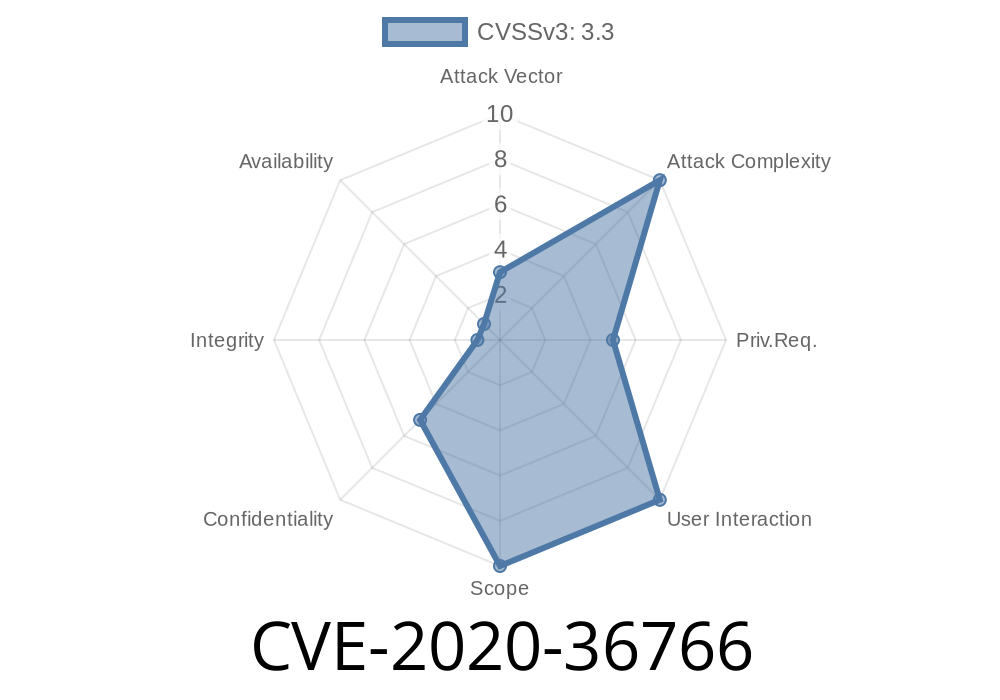CVE-2020-36766, an issue discovered in the Linux kernel prior to version 5.8.6, has caught our attention due to the potential security implications associated with it. We will be analyzing the code snippet responsible for the memory leakage, discussing the implications in greater detail, and diving into other key aspects of this vulnerability that you need to be aware of. Along the way, we'll share some vital original resources which can help you understand the issue better and provide guidance on how to keep your hardware safe.
The Issue
First and foremost, let's understand what precisely this vulnerability is all about. The issue lies in the drivers/media/cec/core/cec-api.c (the Consumer Electronics Control API) which leaks one byte of kernel memory to unprivileged users.
Below is the code snippet that demonstrates the problem
static int cec_config_log_addrs(struct cec_adapter *adap, uint32_t *log_addrs, bool block)
{
int i;
/* Copy logged-in addresses from userspace */
for (i = ; i < CEC_NUM_LOG_ADDRS; i++) {
adap->log_addrs.log_addr[i] = log_addrs[i];
adap->log_addrs.log_addr_mask[i] = log_addrs[i+CEC_NUM_LOG_ADDRS] & xffff;
}
adap->log_addrs.primary_device_type[] = log_addrs[CEC_MAX_LOG_ADDRS] >> 24;
/* The remaining code snippet is omitted for brevity */
}
The memory leak occurs because the log_addrs struct is directly assigned, containing a hole. This means that a part of the memory, which shouldn't be accessed by unprivileged users, has been left exposed. To be specific, the primary_device_type array's second element has been left uninitialized, causing one extra byte of kernel memory to be revealed to users who shouldn't be able to access it.
Exploit Details
Considering that the memory leakage is only of a single byte, one might wonder how harmful this could be. Unfortunately, even a single byte of leaked kernel memory could provide a skilled attacker with enough information to uncover a potential hardware exploit. Revealing kernel memory, even if it's just one byte, could cause attackers to learn about sensitive data or system configurations that may help them craft more targeted attacks.
They might gain insights into which memory regions are associated with specific hardware pointers or configuration data, allowing them to manipulate the hardware or elevate their privileges. It is important to note, however, that this leak is specific to certain hardware systems and the attacker would need to have local access to the device. Due to this, CVE-2020-36766 has been assigned a low CVSS v3 base score of 2.5.
Original References
1. For an in-depth understanding of the vulnerability, refer to this detailed post from the Linux kernel mailing list: https://lore.kernel.org/lkml/20200831205052.4127474-3-hverkuil-cisco@xs4all.nl/
2. Here's the official CVE record for the vulnerability: https://cve.mitre.org/cgi-bin/cvename.cgi?name=CVE-2020-36766
3. The official Linux kernel source code repository can provide more insights on how the CEC API is implemented: https://github.com/torvalds/linux/blob/master/drivers/media/cec/core/cec-api.c
Mitigation and Resolution
The Linux kernel developers have already taken action upon discovering this vulnerability. It has been fixed in the Linux kernel 5.8.6. Therefore, the best way to protect your hardware against this potential exploit is by ensuring that you're running the latest version of the Linux kernel. The patch is available here: https://lore.kernel.org/lkml/20200831205052.4127474-3-hverkuil-cisco@xs4all.nl
Conclusion
Although CVE-2020-36766 might not appear severe at first glance, it's essential to recognize the potential implications of even the smallest memory leaks. Staying up to date with the latest releases, kernel patches, and security-related information can help provide a much-needed level of resilience against similar vulnerabilities in the future.
Timeline
Published on: 09/18/2023 09:15:00 UTC
Last modified on: 09/19/2023 21:23:00 UTC
